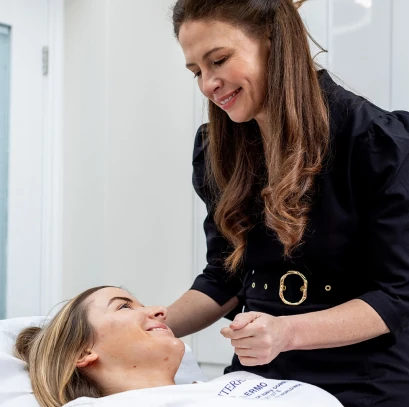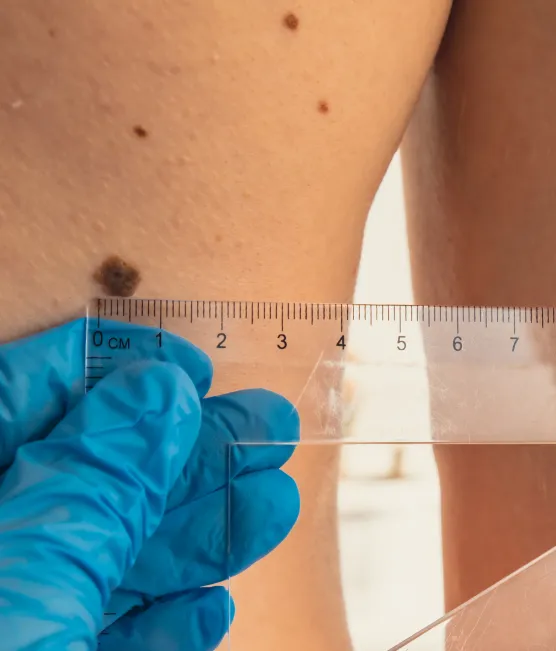
BESPOKE SKIN HEALTH MEMBERSHIP
£189 PER MONTH
FIND OUT MORE

Have a question
about SKIN TAG REMOVAL?
Ask Amanda
The
PROCEDURE

Skin tag removal treatment using a plasma pen is a safe and effective procedure that uses advanced plasma energy to precisely target and remove skin tags and benign moles without directly touching the skin. During the procedure, the plasma pen is held above the skin, emitting controlled plasma energy that penetrates the skin’s outer layer, causing the skin tag or mole to gently come off. This method ensures minimal discomfort and reduces the risk of scarring, making it an ideal option if you’re seeking non-invasive skin tag removal.
Plasma Pen Technology
With our state-of-the-art plasma pen technology, Amanda induces controlled micro-injuries to the skin tissue, stimulating the production of new collagen and accelerating the natural healing process. The thermal disruption caused by the plasma pen encourages the release and activation of essential proteins and growth factors, resulting in increased collagen production. Over time, the excess skin dries off to form tiny crusts that naturally fall off within a few days, leaving behind smoother and rejuvenated skin.
BOOK CONSULTATIONSKIN TAG REMOVAL TREATMENT
AT A GLANCE
Removes skin tags
Takes 15-30 minutes
No downtime
0% interest free
FINANCE OPTIONS AVAILABLE
We offer flexible financing solutions for skin tag removal in Liverpool and our other clinics from £1,000 up to £8,000, allowing you to access the treatments you deserve whilst spreading the cost across manageable monthly payments.
- Instant decisions on applications, no paperwork
- Portal to monitor the status of applications
- No deposits are required
What are skin tags?
Skin tags are small, soft, benign growths that typically appear on areas of the body where skin rubs against skin or clothing. These growths are often flesh-coloured or slightly darker and can vary in size, ranging from a few millimetres to several centimetres in diameter. While skin tags are generally harmless, they can be an issue for cosmetic reasons and self confidence or self esteem, particularly when they catch on clothing or jewellery. Most patients can have skin tags removed from any part of the body.
Why do skin tags occur?
Skin tags form due to a variety of factors, including friction, hormonal changes, and genetics. Areas of the body prone to friction, such as the neck, underarms, groin, and eyelids, are common areas for skin tag development. Hormonal fluctuations, which can happen during pregnancy or in those with conditions like diabetes, can also contribute to the formation of skin tags. Additionally, genetics may play a role, as those with a family history of skin tags are more likely to develop them.
Despite being common, skin tags are not typically covered by the NHS as they are considered cosmetic rather than medically necessary. Therefore, if you’re seeking skin tag removal for aesthetic and cosmetic reasons you may need to explore private clinic treatment options. With our advanced plasma pen technology and expertise, we provide safe and effective skin tag removal procedures tailored to your individual needs, helping you achieve smoother, clearer skin with confidence.


FAQs
"Regain confidence in your skin with our gentle and precise skin tag removal procedures.”
AMANDA AZZOPARDI



